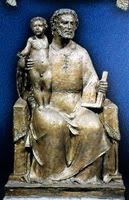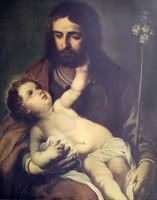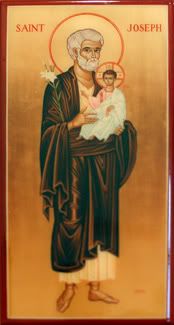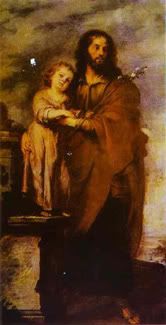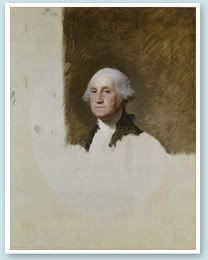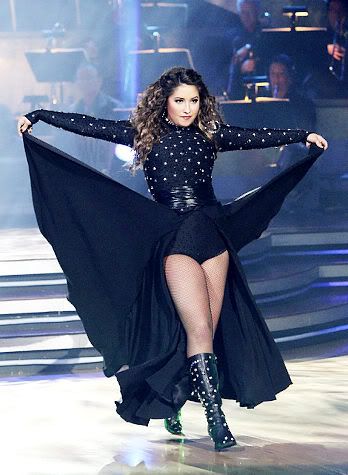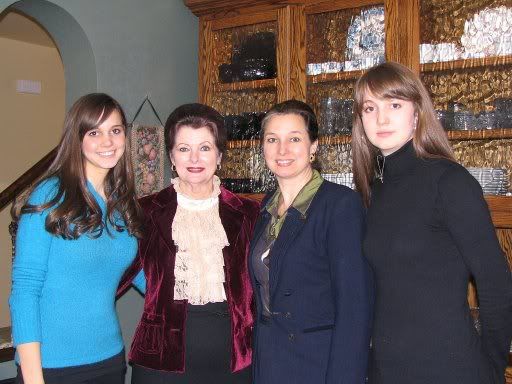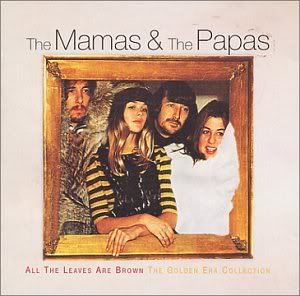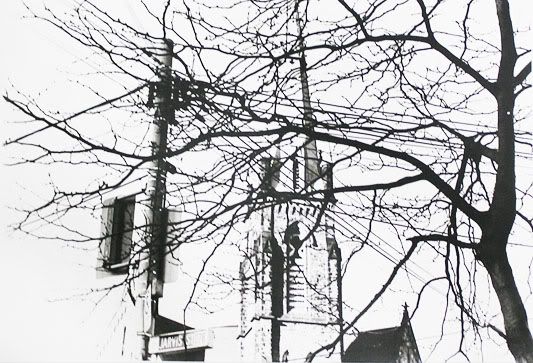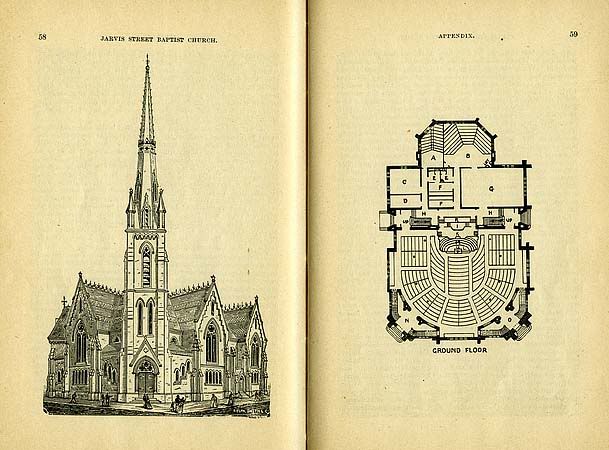Bristol, finalist in Dancing with the Stars *
"These days, it is quite acceptable for aseventeen-year-old girl to parade herout-of- wedlock pregnancy, and to haveher mother’s (and family’s) full support."-------------------------------------------------------------------------------
Sarah Palin's Lost Opportunity
By Kidist Paulos Asrat
06/21/2009
Chornwatch.comThese days, it is quite acceptable for a seventeen-year-old girl to parade her out-of- wedlock pregnancy, and to have her mother’s (and family’s) full support.
About fifty years ago, such young girls would have been sent to a secret location, given birth, and had their babies taken for adoption.
This wasn’t just a prudish precaution. Almost every culture in the world abhors out-of-wedlock births. Whole families and societies are at risk of instability if illegitimate children are nonchalantly and openly accepted in their midst. This is nothing against illegitimate children, they are hardly at fault, but against the environment which could allow illegitimate children to be the norm.
All successful cultures depend on stable families. This is a long, ritualized process, which begins with the marriage of two people, and continues with their giving birth to their children within the confines of that marriage. Each step of the family-building process has its own ritual, from the marriage of the parents, the birth of their children, their baptism and spiritual initiations, their upbringing and education, all culminating with the marriage of these same children so that they can continue with the long and intricate saga of life.
When Sarah Palin paraded her young pregnant daughter Bristol and her boyfriend Levi Johnson at the Republican National Convention, she broke this ritual, and forced us to accept this strange spectacle as normal behavior.
And the conservative world consented. No conservative media reported on the non-conservative nature of the situation. When the liberal media became critical about Palin’s unorthodox family life, which also included her new-born Downs syndrome baby, conservatives descended on them with furious op-eds and commentaries.
A group of conservative women even participated in a video called “I am Sarah Palin”, supporting her working mother role, and daring anyone to say otherwise. One cannot help but wonder if this video title was alluding to an earlier militant feminist phrase, “I am woman (hear me roar).” These Palin women certainly roared.
The Huffington Post is describing the reaction to the most recent Palin incident, involving David Letterman’s jokes and the consequent fallout, as a “new wave of feminism.” I believe this new wave started when Palin went on the grand stage of the RNC as a conservative candidate, bringing her pregnant daughter and her boyfriend, and an infant child along with her. She presented herself as the epitome of the working mom, balancing teenaged children, a special needs child and a demanding career. She was the poster for the modern woman who is not content to stay at home and take care of her family, but who thinks she can do it all.
Letterman’s critique – in the form of acerbic jokes rather than articles - of Palin’s family was met with the roaring force Sarah Palin herself. Palin went on a media blitz, doing her rounds with the morning and evening shows in New York calling, demanding, for Letterman’s apology. How could he attack a young girl with such cruel jokes? she loudly lamented. This is nothing but harmful to the self-esteem of young girls, to be the brunt of “rape” jokes by lecherous old men like Letterman, she continued.
And women around America supported her. There was no longer the Democratic and Republican divide that was still strong when Hillary, the First Potential Woman President was running for the presidency. The self-esteem of young girls eroded by sexist and lecherous old men trumped all that. Here was a movement that was a continuation of the “I am Sarah Palin” pioneer group.
Letterman apologized profusely. In fact he apologized twice. And CBS, his station, still continues to receive threats of sponsorship withdrawals after The Olive Garden and the Embassy Suites Hotels already removed their ads.
In a normal world, the sharp tongue of a comedian would have revealed the truth of a situation, forcing the targeted individual to reassess his situation and either make things better, or just leave town.
Palin remained in Letterman’s town, and attacked him instead, absolutely oblivious to the situation she had created. Her headlong immersion into her political career had obviously left gaps in her family life. Levi Johnson gave a glimpse of that in his own round of talk shows a few months earlier. He revealed that he was coerced into attending the RNC with Bristol, unlike the happy family image we were being fed. He also said that he was often allowed to stay overnight at the Palin house, in Bristol’s bedroom. Bristol must have been out of control for Palin to concede to such arrangement. Family dynamics must have been pretty bad for Palin to have taken such drastic measures.
In the end, rather than face up to her failures as a mother, Palin readily took on the “victim’s” role, and entered the world of new wave feminism. She took no responsibility for her daughter’s condition, a situation which only a few decades ago would have brought shame to such a family, and especially the mother. She sacrificed the harmony of her family for an ambitious political life, with no guarantees that she will get the prize of presidentship. After all, her RNC debacle didn’t earn her anything but the airing of her family’s secrets.
Fifty years ago, it wouldn’t have been just a popular comedian who would have made those disparaging jokes. The whole attitude of the community and the neighborhood would have made it very clear to Palin that she had erred.
Now, all she has to do is call on her sisterhood of conservative and liberal new wave feminists, and talk about low self-esteem and young girls as victims of (lecherous), sexist men in the guise of comedians. This is such weak language coming from someone who hopes to lead the country sometime in the future.




